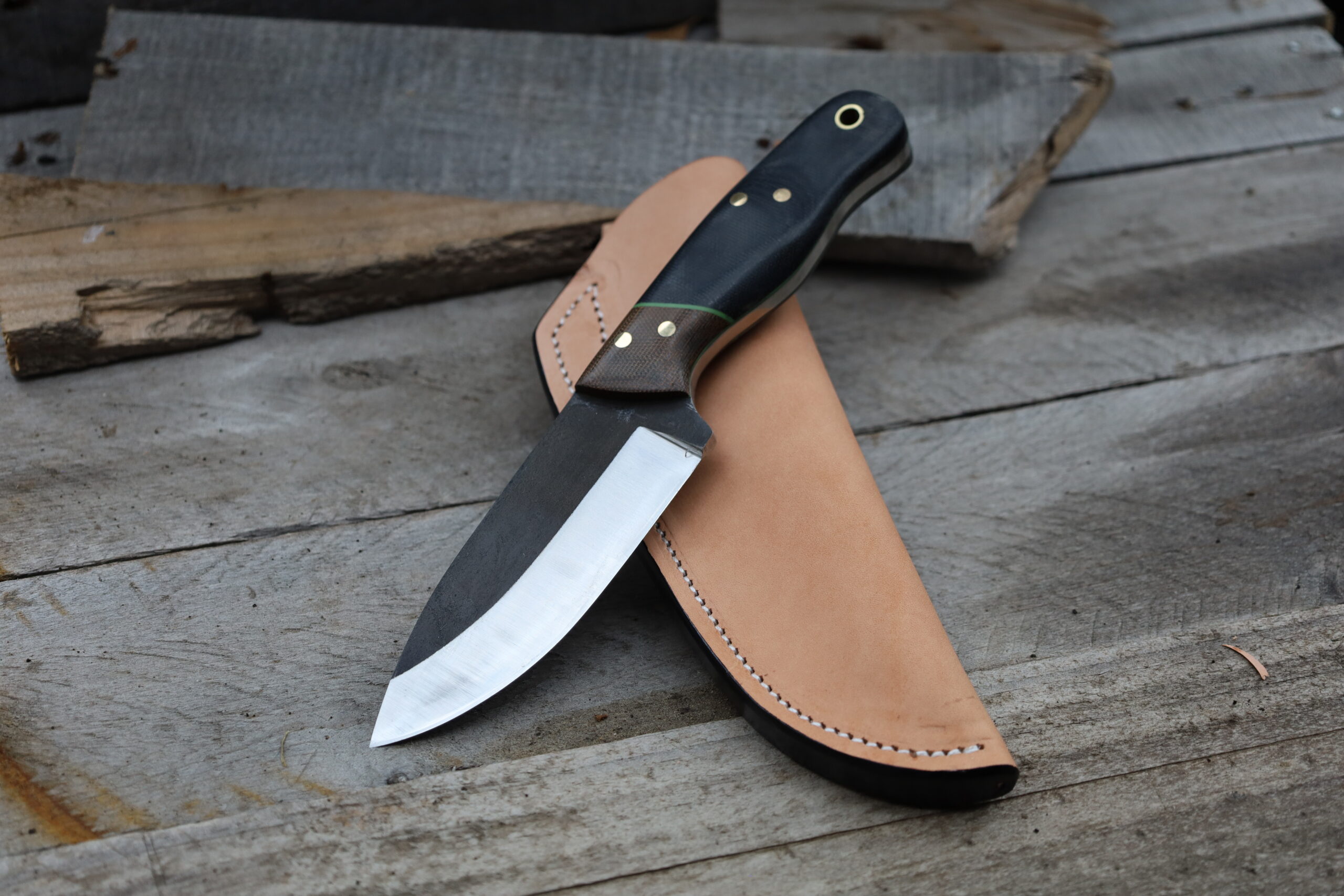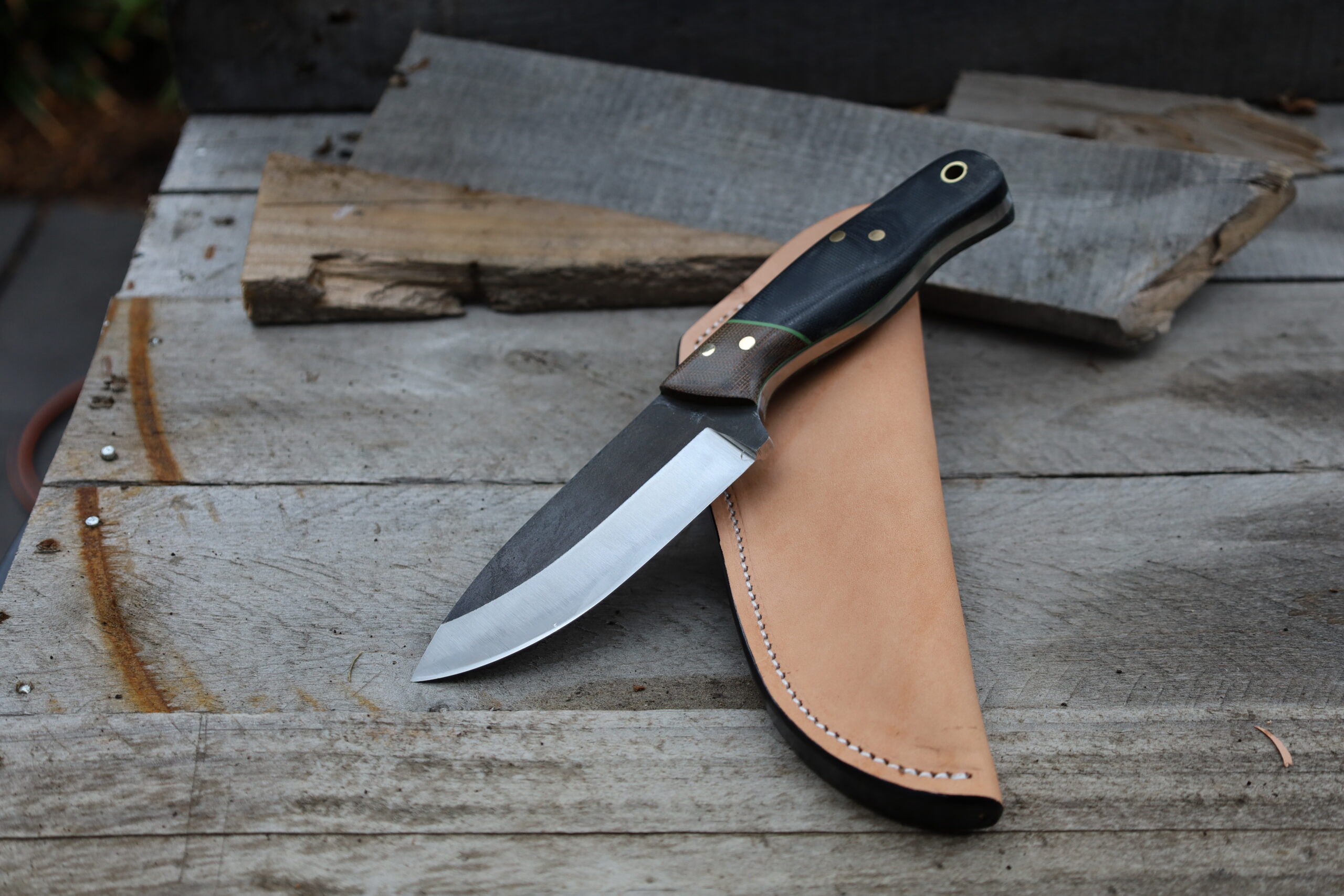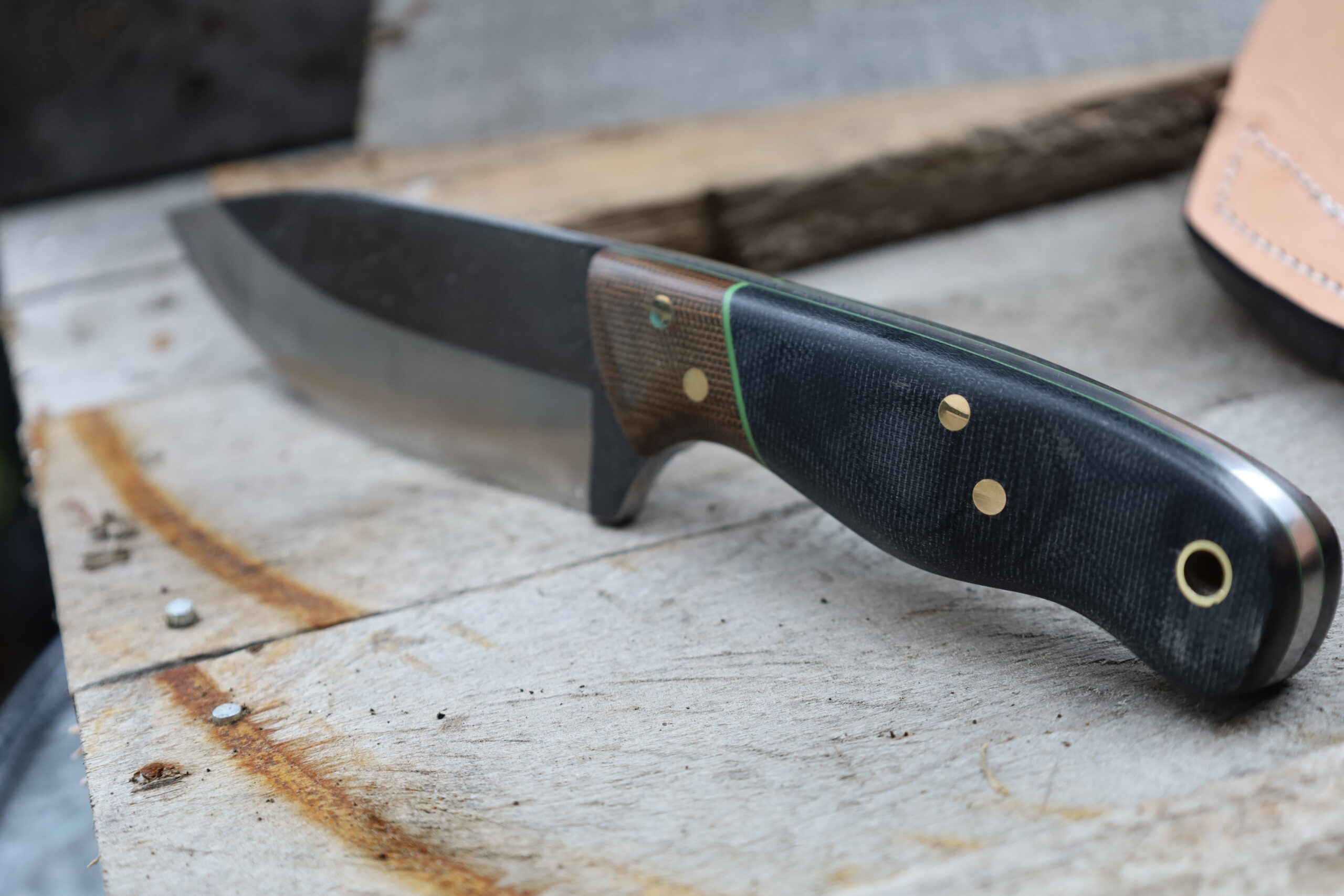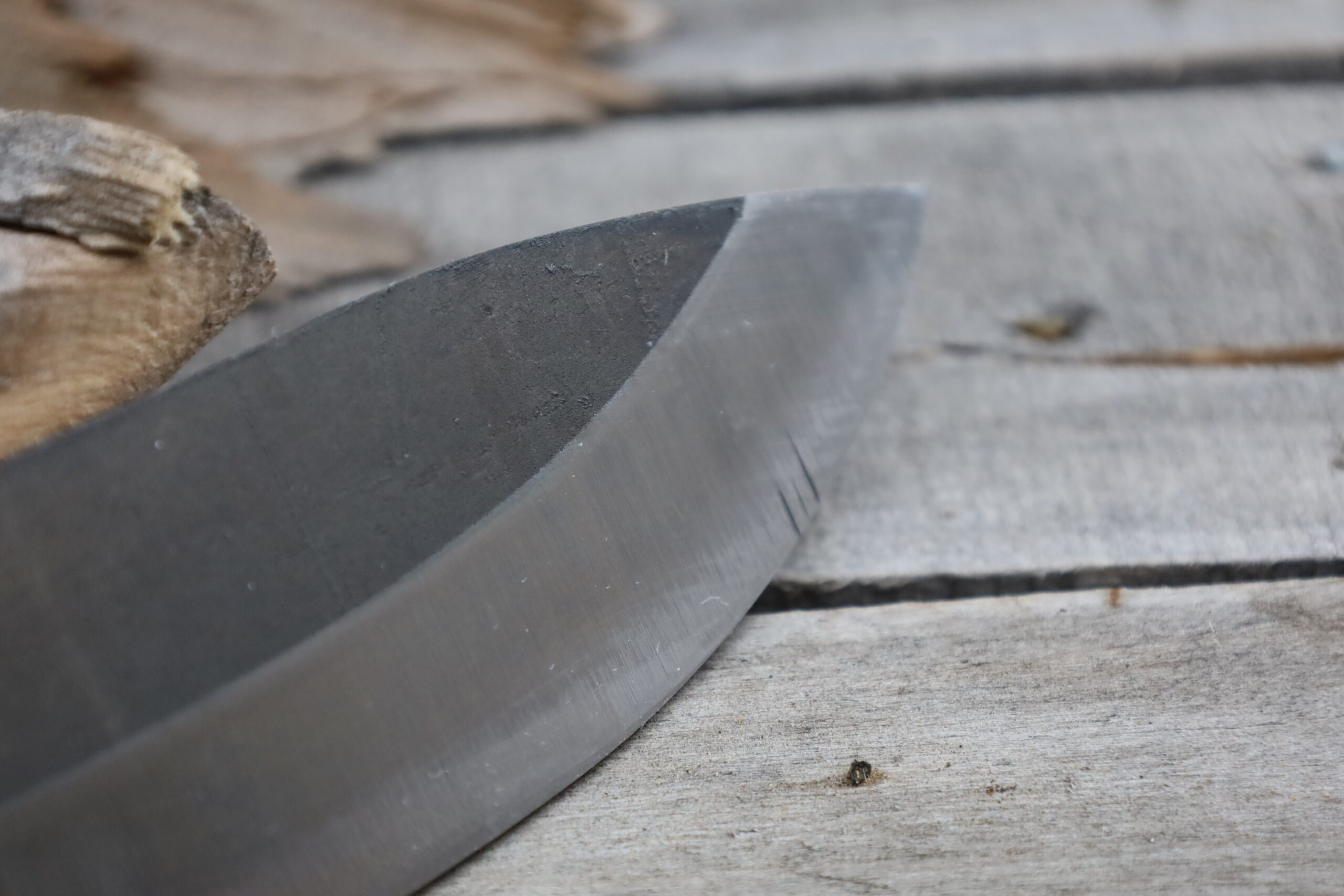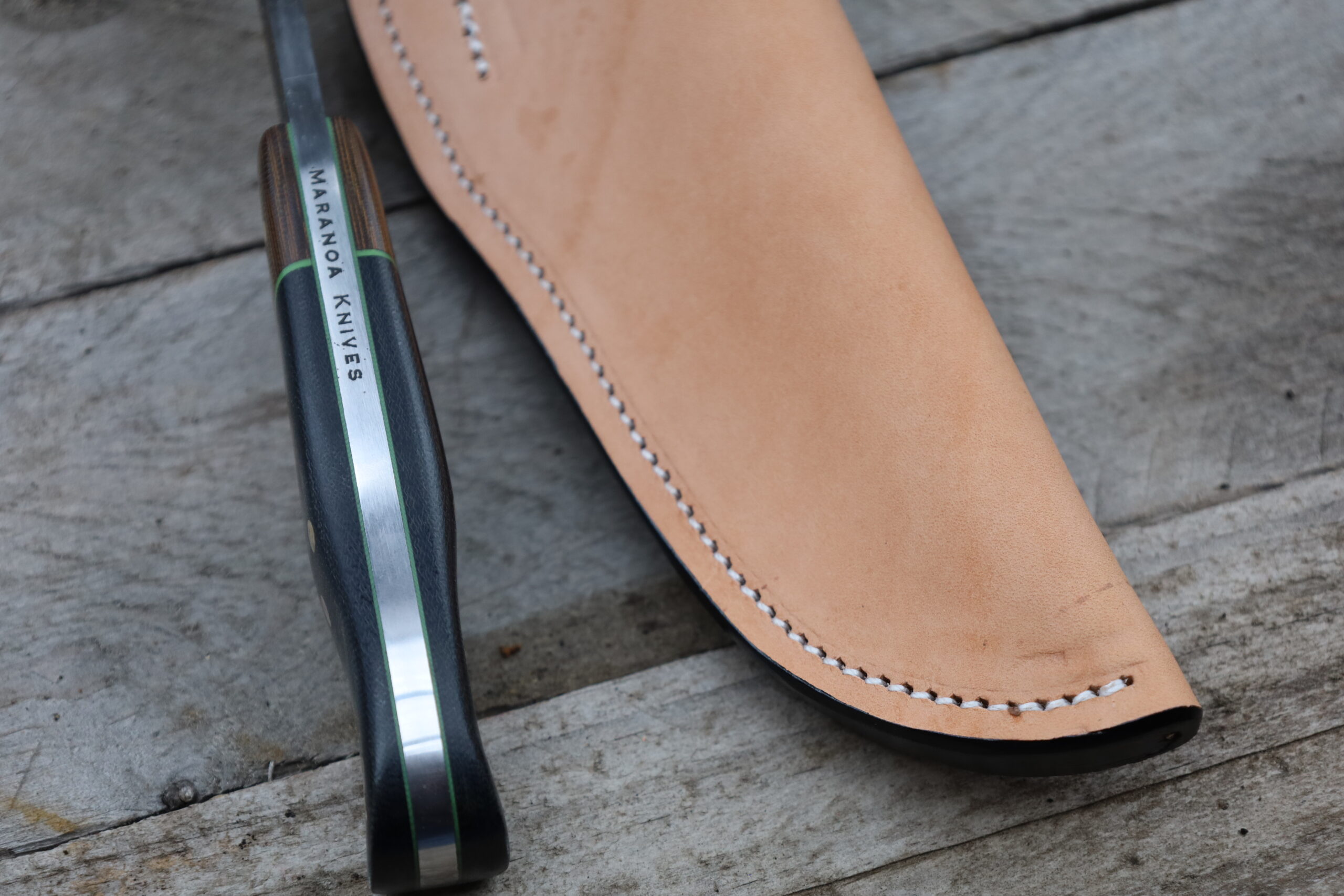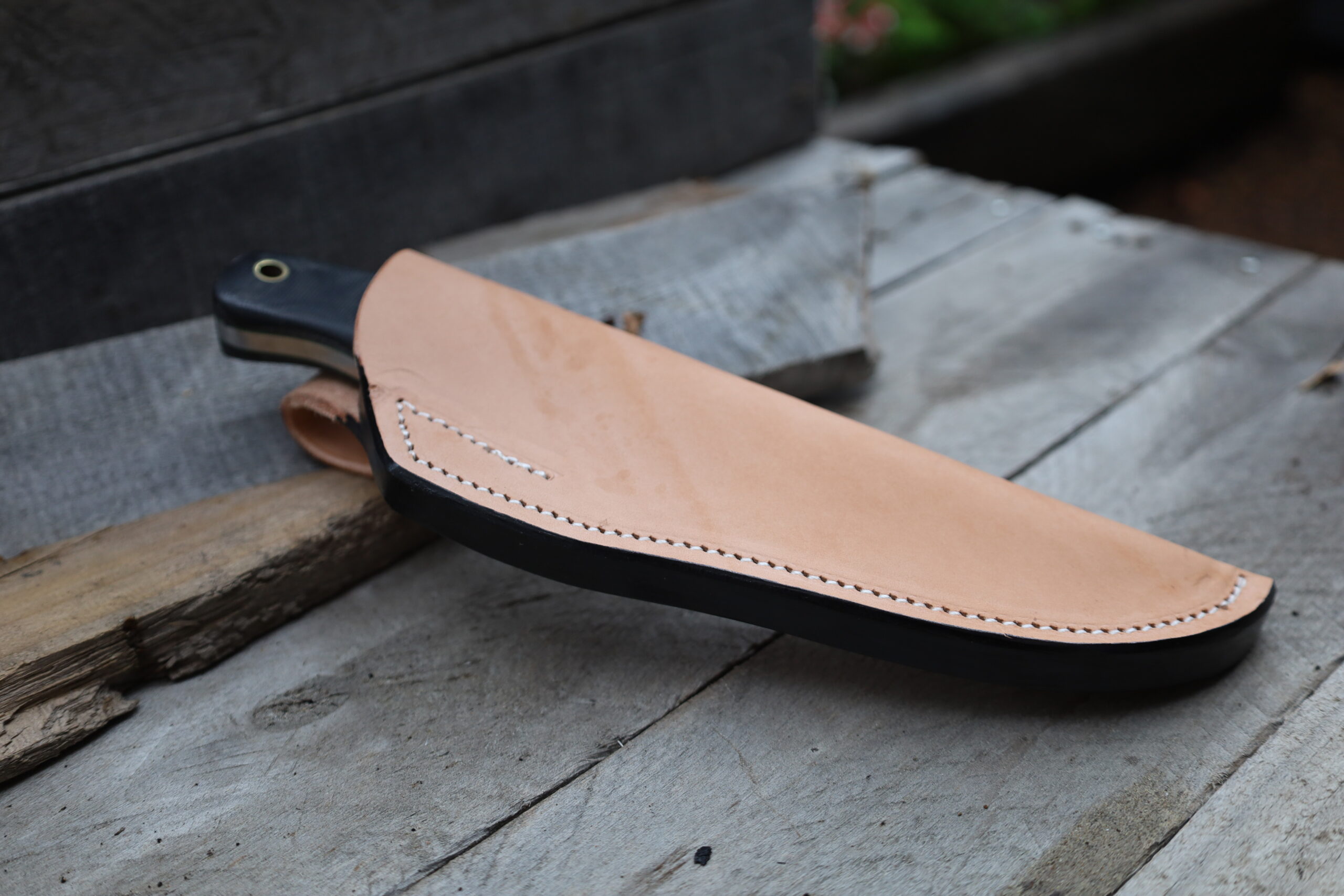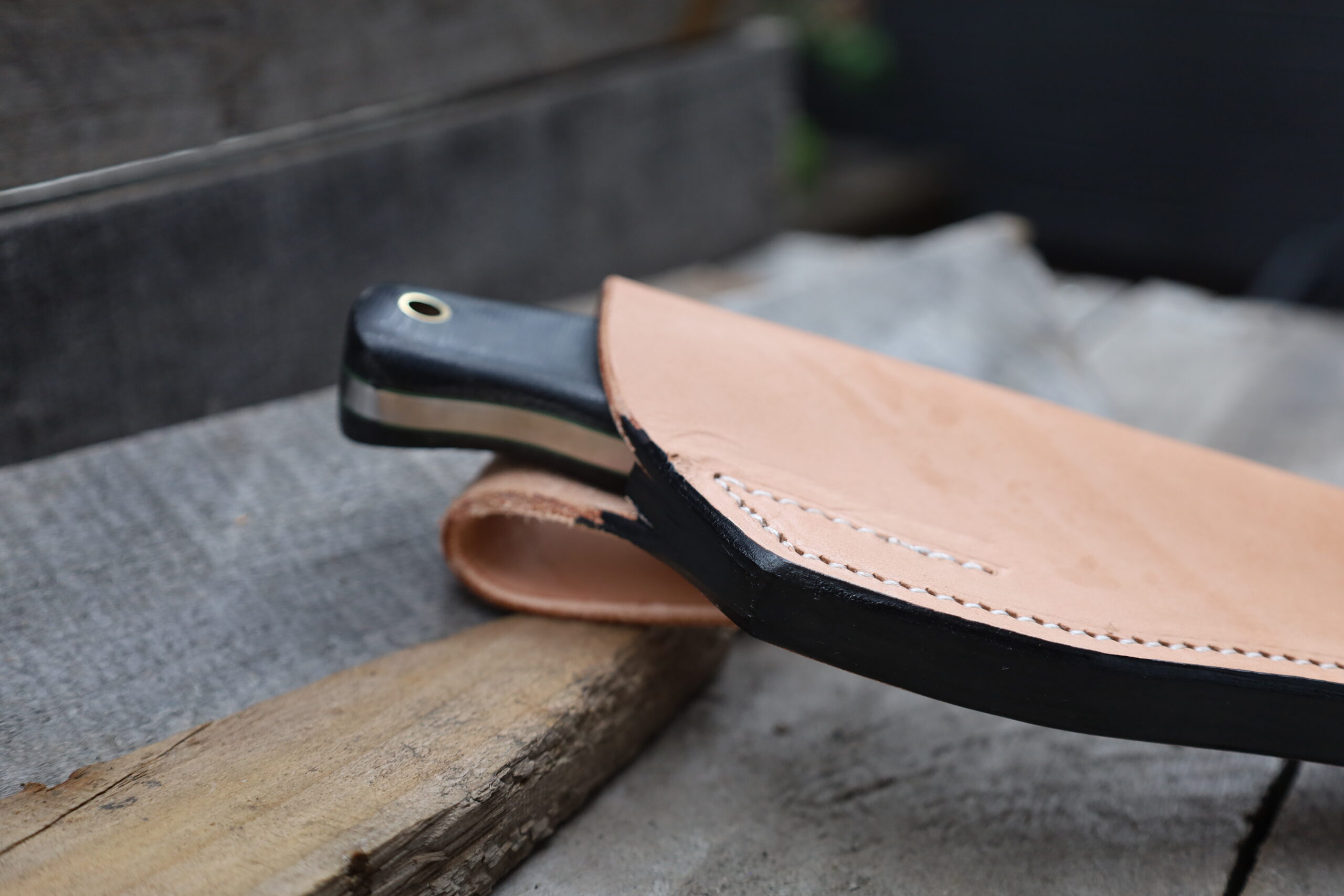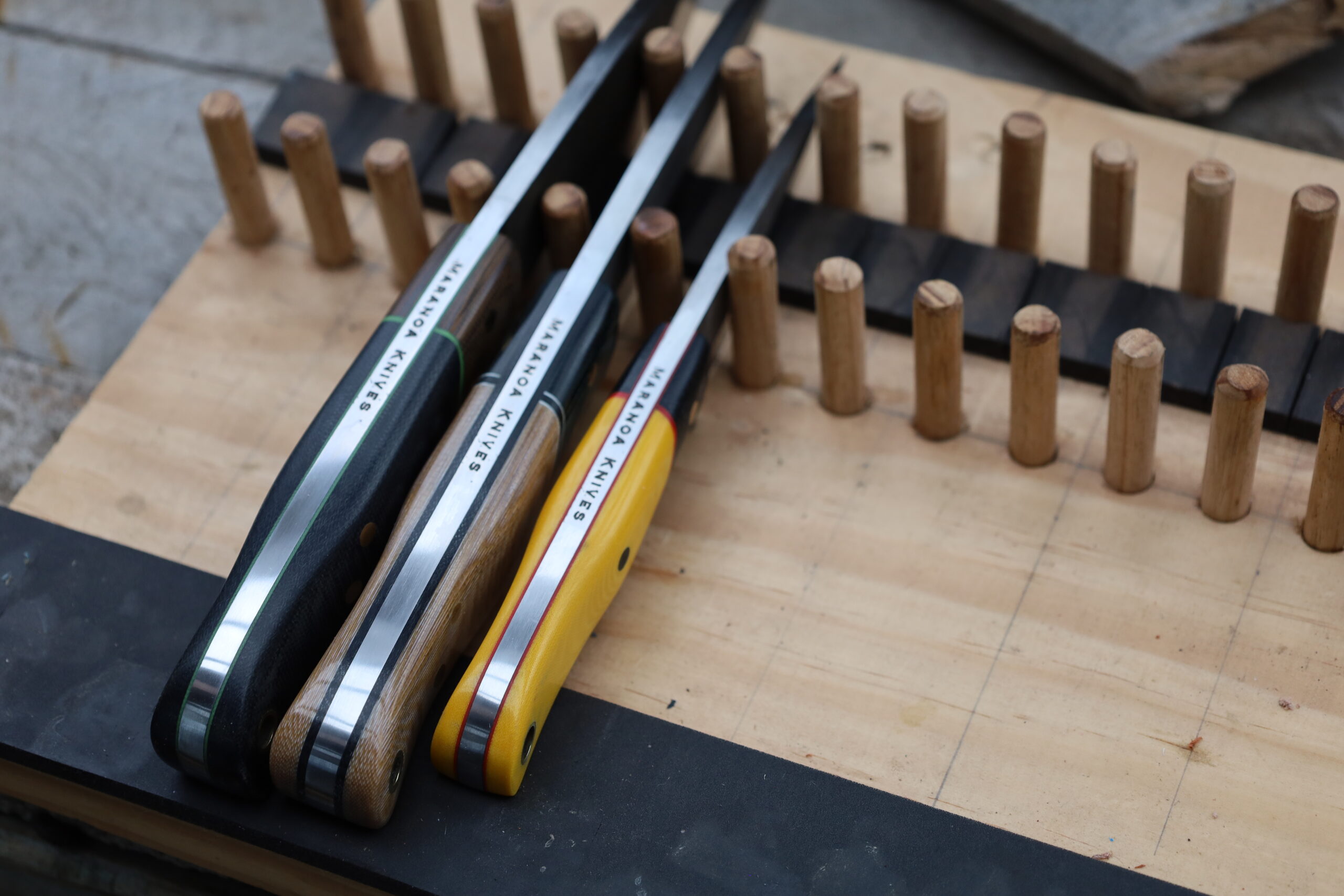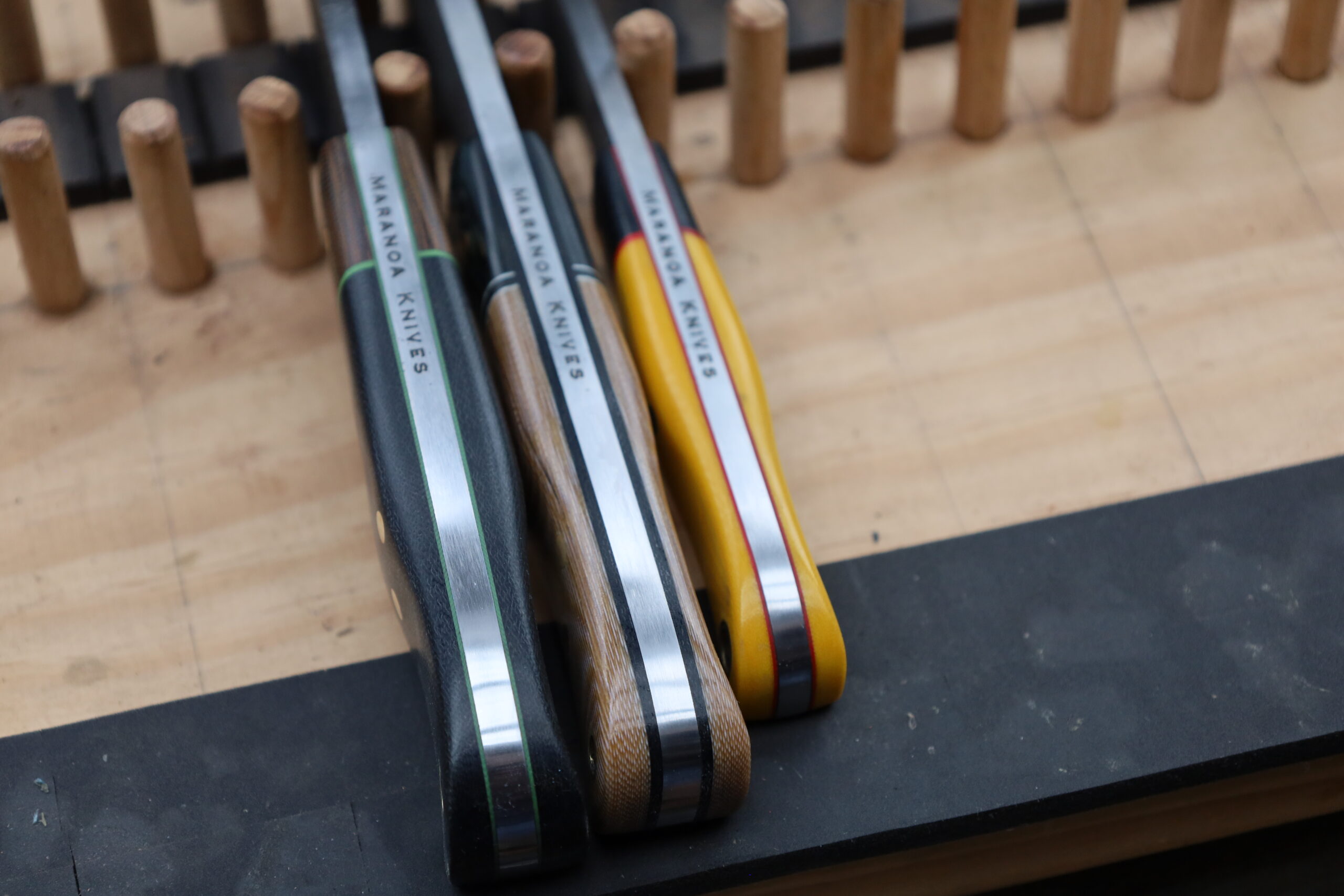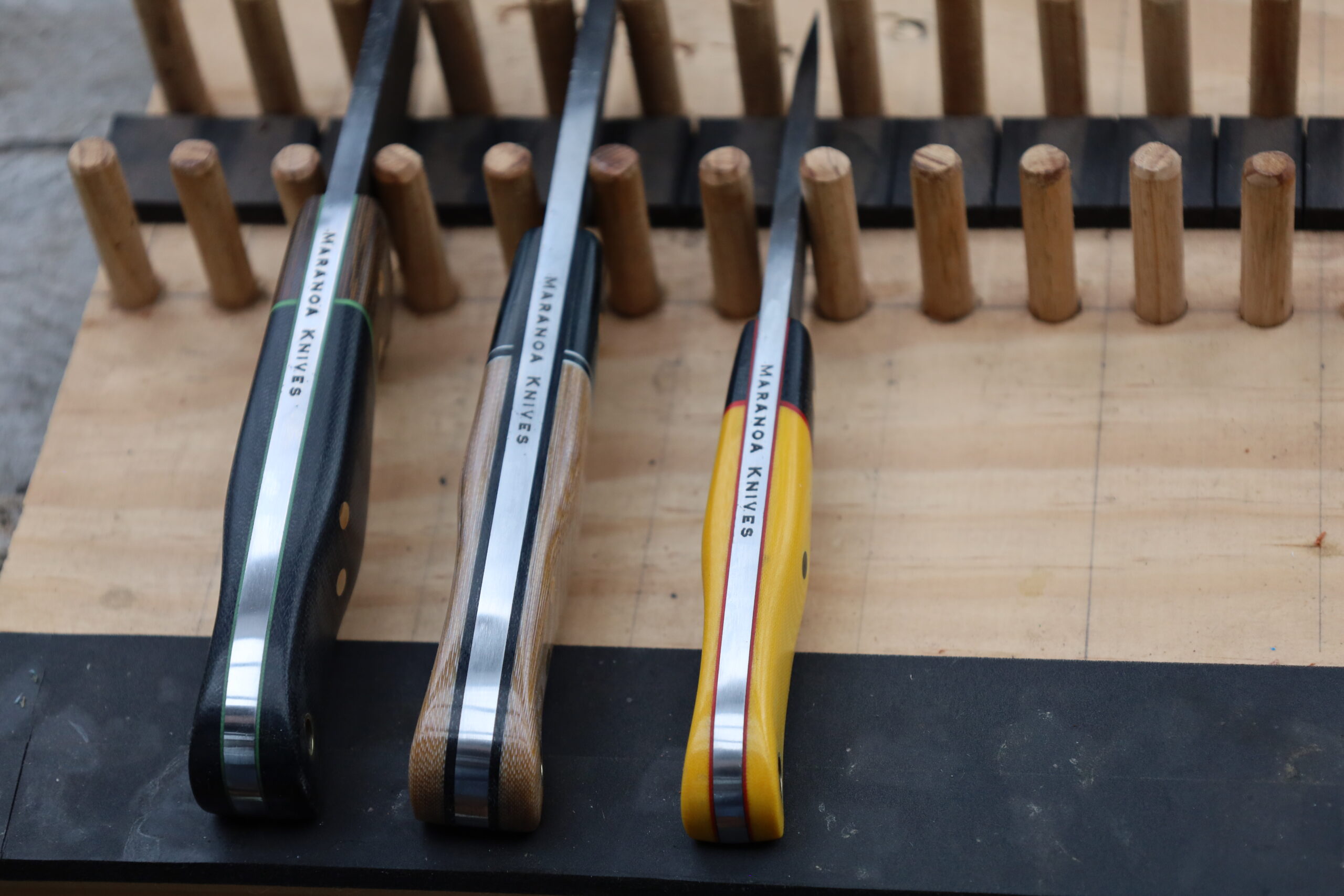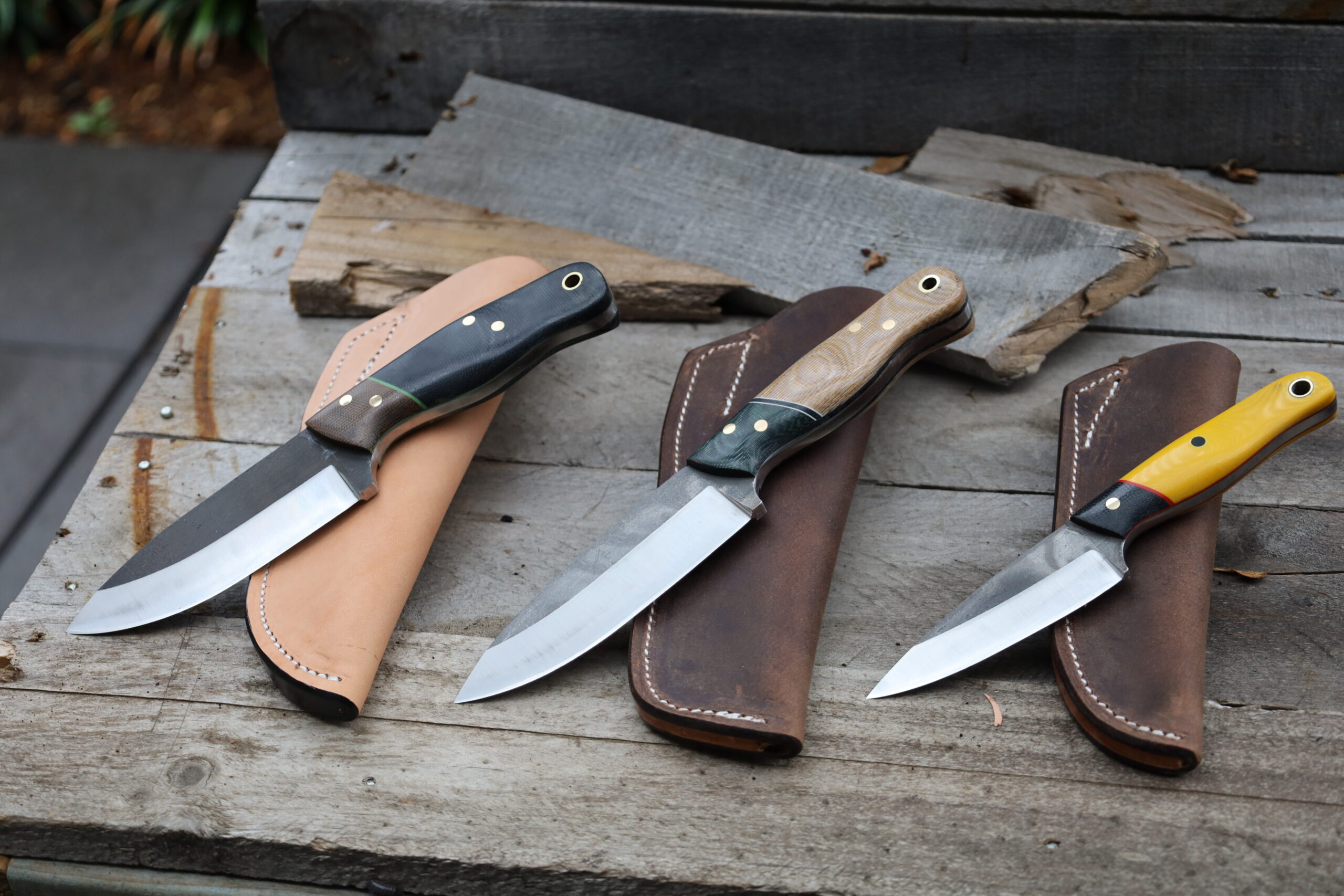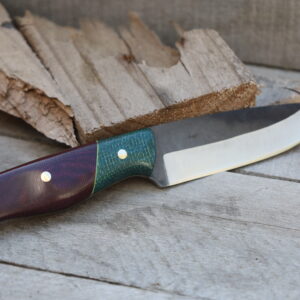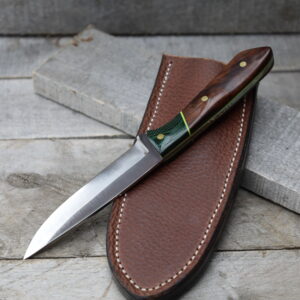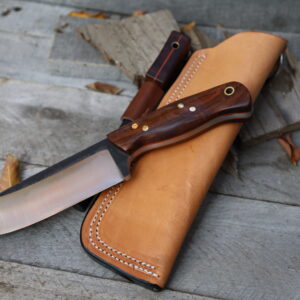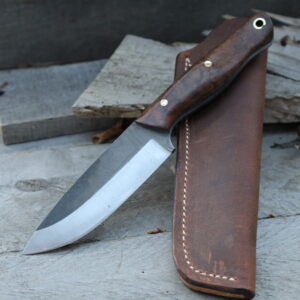Large Bushcraft Beast- CPM 3V**
Original price was: $420.00.$370.00Current price is: $370.00. incl GST & Free Shipping
Blade: 3V 116mm (4.5 inch), 5.3mm thick, Sabre Convex Grind, Heat treat Finish
Scales: Green and Black Micarta with Zombie Green G10 liners and spacer and double brass pins.
Sheath: Hermann Oak Leather
1 in stock
Free shipping on orders over $150
- Satisfaction Guaranteed
- No Hassle Refunds
- Secure Payments
Description
Large Bushcraft Beast – CPM 3V**
This knife was inspired by a couple of knives and is probably about the perfect size for an all round bushcraft knife. First inspiration came from the Architect Field Buddy 5.5 which was developed by the KnifeConnection in USA. It was also inspired by the Bark River Mini Aurora. I like the Field Buddy a lot but there are some things that I wanted to improve upon. The Field Buddy has a near full height grind and is traditionally manufactured from 1095 Carbon Steel. Whilst 1095 is a good steel, it lacks toughness, corrosion resistance and edge retention. The handle scales on the Field Buddy are removable and are a bit on the thin side. The Bark River Mini Aurora is a great shaped knife but the handle is too small. My version…the Large Bushcraft is a beast of a knife. It will perform general purpose bushcrafting and also doubles as a handy hunting and camp knife. It has enough belly to skin. If you want a tough bushcraft knife that can handle bushcrafting tasks in Australia, 3V is the steel of choice. It will rust quicker than Magnacut but it is significantly tougher.
The blade is approximately 5.3mm thick and is 4.5 inches (116mm) long. It has been heat treated to 61 Rockwell by Ausmaker Supplies in Sydney. The spine has been ground to a sharp 90 degrees so it will strike a fero rod (with ease) to produce a shower of sparks.
All About CPM 3V Steel for Knife Blades
There are many different types of steel that your knife could be made from. Why choose CPM 3V Steel? Toughness. CPM 3V steel has its advantages when it is used in a knife. It makes a great field knife blade that is tough and unlikely to break with heavy, near abusive, use. It will likely oxidize over time depending on the working environment, 3V steel is not stainless. Different types of steel have different properties, and some are better for knives than others. There are four general properties which most use to evaluate knife steel:
Edge Retention/Wear Resistance (how the cutting edge holds up to cutting use)
Toughness (how durable the blade is)
Heat treatment (The hardness of the steel)
Corrosion resistance (Amount of chromium in the composition of the steel, chromium content over 11% is considered stainless)
What does CPM stand for? Crucible Particle Metallurgy (CPM)
CPM steel utilizes and expensive and complex manufacturing process that provides a more even distribution of carbides. CPM 3V is an American-made steel product by Crucible Industries in Syracuse, New York. CPM is a trademarked name for a process that is also called Powdered Metallurgy or PM steel. CPM, makes the steel stronger than the SAME steel made using a conventional steel manufacturing process. CPM makes the steel more resistant to breaking, fracturing or chipping.

CPM 3V steel has the following steel composition (Note the high amount of vanadium content which produces some of the smallest and hardness carbides in knife steel.)
0.80% Carbon
7.50% Chromium
2.75% Vanadium
1.30% Molybdenum

Let us discuss CPM 3V steel when it comes to its performance in a knife. Again, consider the four properties of knife steel:
Toughness – This steel has outstanding toughness, so you can expect it to survive abuse in the field and in survival scenarios. This is the principle reason to select CPM 3V for a knife.
Edge Retention/Wear Resistance – CPM 3V steel does not hold its edge as well as some other steels like S35VN or S30V. This means that the combination of alloys in the steel make it more susceptible to dulling with repeated use. That being said, according to Crucible’s testing it holds an edge better than D2 (which is a comparable tool steel used in knifemaking) at a hardness 60 RC. When comparing CPM 3V steel vs. A2 steel, 3V is superior in edge retention and toughness with a big win for CPM 3V.
Heat Treatment – Heat treatment effects the edge retention and toughness and is determined by the knifemaker. According to Crucible, 3V steel is meant to be heat treated in 58-60 RC (Rockwell Hardness Measurement) range for knife blades. Less hardness in the heat treatment will mean more toughness but less edge retention; like many properties with knife steel it is a trade-off in qualities.
Corrosion Resistance – CPM 3V steel is not stainless steel, it will oxidize if not properly cared for. Even with proper care, discoloration or oxidation can be expected over time. Applying a very hard, scratch resistant coating such as PVD or DLC to a blade surface will help slow corrosion where the coating covers the blade – which general excludes the cutting edge.
Description of this Knife**
The overall length of the knife is 9″. ** The blade has a raw finish and on the off side you’ll see fine lines at the front of the blade. These lines were deeply imprinted in the raw steel and I’ve left them there which is why the knife is discounted. The scales are Green and Black Micarta with Zombie Green G10 liners and spacer and double brass pins. The Handle is large and roomy.
The sheath is made with Hermann Oak Leather.

